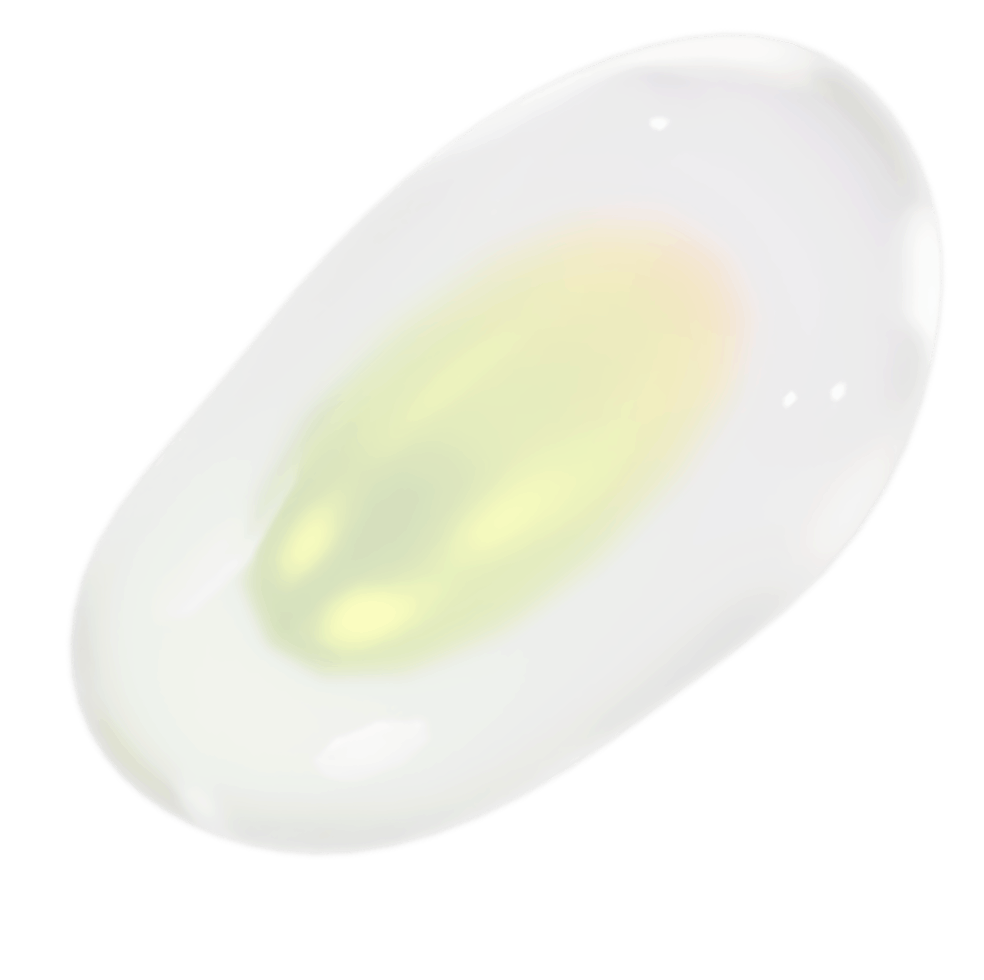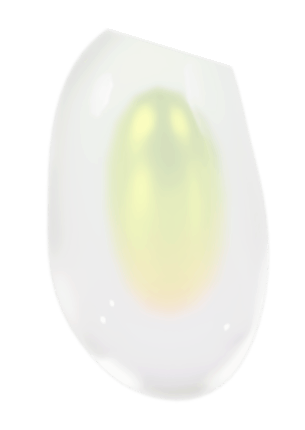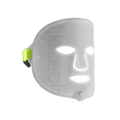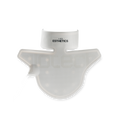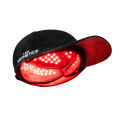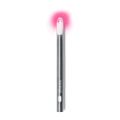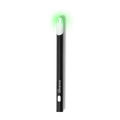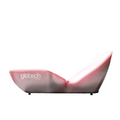Blue Light Therapy
Blue light therapy is an innovative, noninvasive skincare treatment that continues to gain recognition for its ability to target acne, oiliness, inflammation, and pore visibility. Research shows that it works by using specific wavelengths of blue light to penetrate the upper layers of the skin, where it interacts with acne-causing bacteria and helps reduce inflammation and irritation.Unlike traditional acne treatments that often rely on harsh ingredients or oral medications, blue light therapy offers a gentler alternative. Many users report that using LED light consistently helps restore balance to breakout-prone skin, reduce congestion, and support a smoother, clearer complexion without disrupting their skin.
What are the benefits of blue light therapy?
Treating acne and breakouts
One of the most common uses of blue light therapy is treating mild to moderate acne. LED therapy targets Cutibacterium acnes, the bacteria responsible for inflamed breakouts. When exposed to blue light in the 405–465 nanometer range, the bacteria produce oxygen, which has been shown to break them down from within. This process helps clear existing blemishes and prevent new breakouts from forming.
People dealing with recurring breakouts, clogged pores, or congestion from hormonal fluctuations often find that regular sessions significantly reduce both the frequency and intensity of flare-ups. It can be especially effective when paired with skincare products designed to work in harmony with LED light, such as light-activated serums or hydrating treatments.
Controlling oil and reducing pore visibility
Oily skin is one of the most common contributors to acne, congestion, and visibly enlarged pores. Blue light therapy offers a way to address this issue by helping regulate overactive sebaceous glands. By calming oil production rather than stripping the skin, it creates a more balanced environment that reduces the likelihood of breakouts and clogged pores without causing dryness or irritation.
With consistent use, many users notice a reduction in surface shine, smoother skin texture, and less prominent pores, particularly in oil-prone areas like the T-zone and chin. As sebum levels normalize, the skin appears more refined and easier to maintain. Noticeable improvements in oil control and pore appearance are often observed within a few weeks, especially when treatment is maintained as part of your skincare routine.
Soothing inflammation and calming redness
Blue light also offers anti-inflammatory benefits, helping to calm skin that’s irritated from breakouts, friction, or the overuse of active ingredients. This makes it a valuable option for sensitive skin types that struggle with redness or reactive flare-ups.
During treatment, pairing blue light with a light-activated serum formulated to soothe and support skin health can help amplify its calming effects. Following up with your usual skincare products, such as a moisturizer or cream, helps lock in hydration and strengthen the skin barrier, leaving the complexion feeling balanced and more resilient.
How does blue light therapy really work?
The visible blue light used in LED treatments penetrates just deep enough into the skin to target acne-causing bacteria and overactive oil glands, without disrupting deeper tissues or healthy skin cells. Once it reaches the bacteria, it initiates a reaction that generates free radicals, damaging the bacterial membrane and preventing it from spreading or triggering further inflammation.
At the same time, blue light has a calming effect on the skin’s surface, helping to reduce redness, irritation, and sensitivity often associated with active breakouts. This dual action helps create a more balanced environment for the skin, allowing it to integrate more easily with daily skincare routines and adapt to external stressors.
How effective is blue light therapy?
Blue light therapy has been shown to be highly effective when used consistently and as part of a comprehensive skincare routine. Unlike spot treatments that only address symptoms, it targets one of the underlying causes of acne, bacterial overgrowth, while also reducing surface inflammation and buildup.
Most users experience the best results by following a consistent schedule of:
- 3 to 5 blue light therapy sessions per week
- 10 to 20 minutes per session
- Pairing treatments with an LED-compatible, light-activated serum
Clinical studies and real-world use suggest visible improvements can appear within 2 to 4 weeks, with continued progress over time. Many users report clearer skin, fewer breakouts, and minimized pore visibility after completing a full cycle of LED treatment. For lasting benefits, it’s essential to maintain a balanced skincare regimen that includes exfoliation, hydration, and sun protection.
Side effects of blue light therapy
Blue light therapy is considered a safe, noninvasive treatment for most skin types and tones when used as directed. It doesn’t burn or damage the skin’s surface and, unlike exfoliants or retinoids, won’t cause flaking, purging, or sun sensitivity. Clinical research shows that low-level wavelengths can effectively target specific concerns without disrupting the skin barrier.
That said, some users may experience:
- Mild redness or a warm sensation immediately after treatment
- Slight dryness, especially during the first week of use
- Sensitivity if used too soon after applying strong actives
These effects are typically mild and temporary. Using a hydrating or barrier-supporting product like Hydrogel Masks after each session can help soothe the skin and maintain comfort. It's also best to avoid exfoliants or intensive skincare products immediately before or after treatment to prevent irritation.
Risks and precautions of blue light therapy
While most people can use blue light therapy safely, there are a few cases where it may not be appropriate:
Avoid treatment if:
- You are currently taking medications that increase light sensitivity, such as tetracyclines or other photosensitizing drugs (consult your physician)
- You have a known light-reactive skin condition, such as lupus or porphyria
- Your skin is actively healing from recent procedures like laser resurfacing, microneedling, or chemical peels
- You are pregnant or breastfeeding (consult your healthcare provider)
- You are undergoing chemotherapy or other immunosuppressive treatments
- You have a history of epilepsy or photoallergy
- You are receiving steroid or cortisone injections
For sensitive users or those new to LED therapy, starting with shorter sessions and gradually increasing frequency can help your skin adjust comfortably. It’s also a good idea to avoid direct sunlight immediately following treatment, even though blue light does not cause UV-related damage. People with deeper skin tones (Fitzpatrick type V or VI) may also be more prone to temporary pigmentation shifts, though these effects typically resolve once treatment is paused. Always follow your LED device’s usage guidelines to ensure safe and effective results.
How to choose the right blue light therapy device?
Choosing the right at-home LED device is key to getting consistent, visible results. Not all blue light tools are created equal — differences in wavelength, power, and treatment coverage can significantly affect how well the device performs.
Look for the following features:
- Wavelength between 405–465nm for effective acne targeting
- Verified safety testing or FDA clearance
- Built-in timers for consistent sessions
- Comfortable design — whether it’s a mask, handheld wand, or panel
- Compatibility with light-activated serums for enhanced results
While a variety of at-home LED devices are available on the market, not all offer the same level of precision, coverage, or clinically supported wavelength output. The most effective tools tend to deliver blue light in the 415–445 nanometer range—recognized in dermatology research for its ability to target acne-causing bacteria while remaining gentle on the skin.
The Glotech™ Mask Pro and Glotech™ Mask Lite from LED Esthetics have emerged as leading choices in this space, offering FDA-cleared technology, full-face coverage, and consistent light delivery aligned with clinical standards. The wireless design, built-in session timers, and comfortable fit make these LED devices a preferred option for users looking to achieve professional-level light therapy results at home.
Key takeaways from LED Esthetics
More people are turning to blue light therapy as a reliable way to support clearer, calmer skin without relying on harsh topicals or medications. With its precise, research-backed mechanism, it’s become an increasingly popular option for those looking to address breakouts, oiliness, and visible pores through gentle, light-based technology.
If you’re considering incorporating blue light therapy into your routine, LED Esthetics’ devices are developed to deliver targeted wavelengths of blue light with professional-level precision — right from the comfort of home. Whether you're managing persistent breakouts or working to maintain overall skin clarity, choosing the right LED light therapy products are key to supporting your long-term skin goals.
Explore the benefits of blue light therapy with confidence — and take the first step toward visibly healthier skin with expert-designed technology you can trust.
